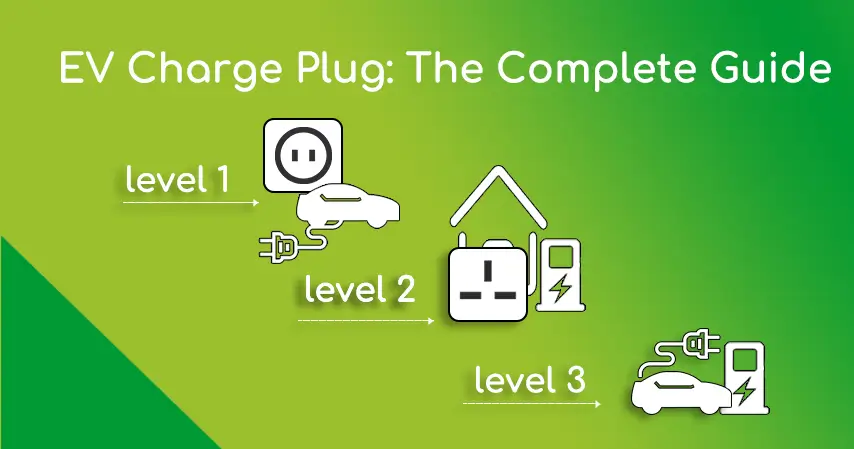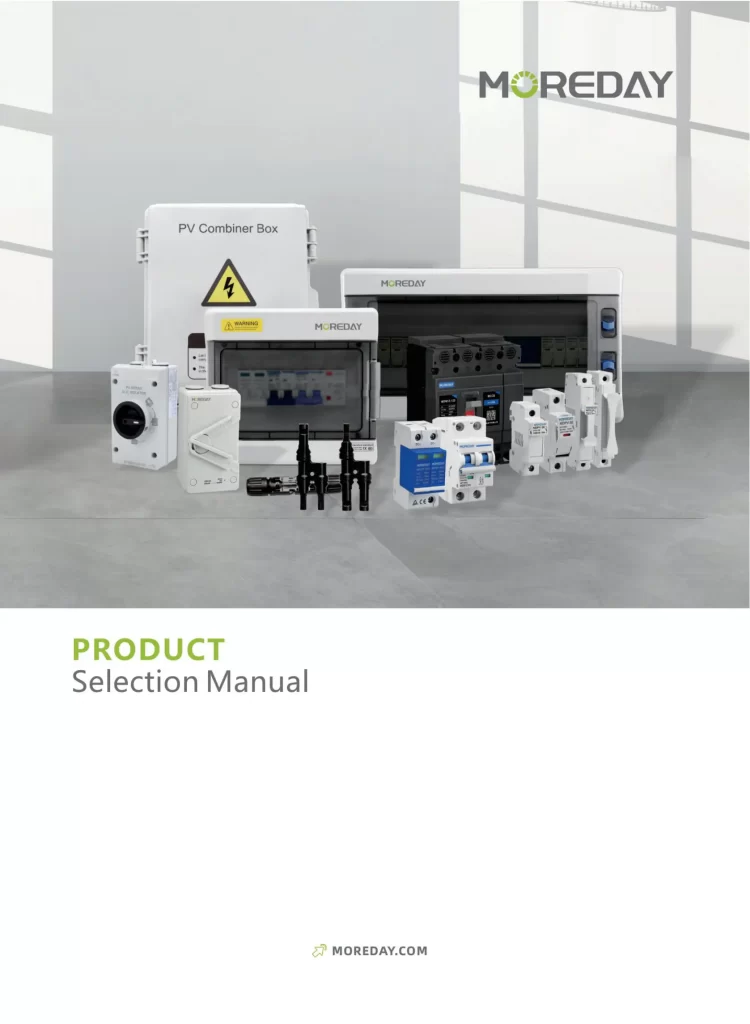Introduction
Welcome to our comprehensive guide on EV charge plugs. As electric vehicles (EVs) continue to gain popularity, understanding the different types of charging plugs is essential for EV owners and enthusiasts. In this guide, we will explore the various EV charging levels and the corresponding plug types used for each level.
EV charging levels are categorized into three main types: Level 1, Level 2, and Level 3 (also known as DC fast charging). Each level offers different charging speeds and requires specific plug types. We will delve into the details of each level and provide insights on the charging capabilities and timeframes associated with them.
Furthermore, we will discuss the different types of EV charge plugs that are commonly used worldwide. These include the J1772 plug for Level 1 and Level 2 charging, the CHAdeMO and SAE Combo (CCS) plugs for Level 3 charging, and the Tesla/NACS plug for Tesla vehicles. Understanding these plug types will help EV owners navigate the charging infrastructure more effectively.
As the EV industry continues to evolve, new advancements in charging plug technology are emerging. We will touch upon the future of EV charge plugs and explore the potential developments that may shape the charging landscape in the coming years.
Whether you are a current EV owner, considering purchasing an EV, or simply interested in the world of electric mobility, this guide will provide you with valuable insights and knowledge about EV charge plugs. So let’s dive in and explore the fascinating world of EV charging plugs together.
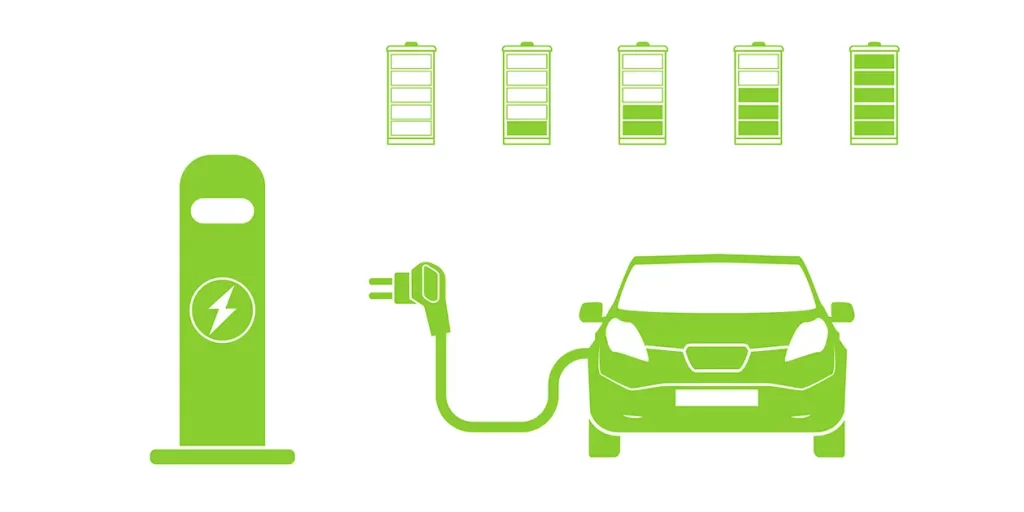
Understanding EV Charging Levels
When it comes to charging your electric vehicle (EV), it’s important to understand the different charging levels available. EV charging levels refer to the speed at which your vehicle can charge and the amount of power it can receive.
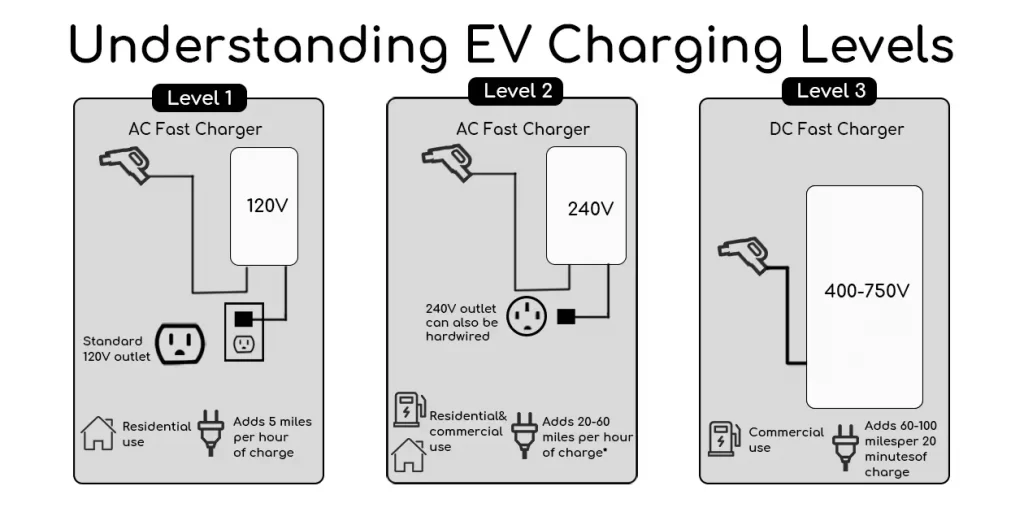
There are three main levels of EV charging: Level 1, Level 2, and Level 3. Each level offers a different charging speed and requires different equipment.
Level 1 charging is the slowest option, using a standard 120-volt household outlet. This is the charging level that comes with most electric cars and provides a “trickle charge” that adds a few miles of range per hour. While convenient for short daily commutes, Level 1 charging may not be suitable for longer trips or drivers with higher mileage needs.
Level 2 charging is faster and requires a 240-volt outlet, similar to what you would use for a clothes dryer or electric stove. This level of charging can add about 20-25 miles of range per hour and is typically done at home or at public charging stations. Many EV owners choose to install a Level 2 charging station in their garage for faster and more convenient charging.
Level 3 charging, also known as DC fast charging, is the fastest option and is typically found at public charging stations. This level of charging can provide a significant amount of range in a short amount of time, usually adding 80% of the charge in 30 minutes or less. However, not all EVs are compatible with Level 3 charging, so it’s important to check your vehicle’s specifications.
Understanding the different charging levels can help you choose the right charging option for your needs. Whether you’re looking for overnight charging at home or quick charging on the go, there is a level of charging that will suit your lifestyle and keep your EV powered up and ready to go.
Types of EV Charge Plugs
When it comes to EV charge plugs, there are several different types to be aware of. These plugs are designed to connect your electric vehicle to a charging station and deliver power to your car’s battery. Understanding the different types of EV charge plugs will help you ensure that you have the right equipment for your charging needs.
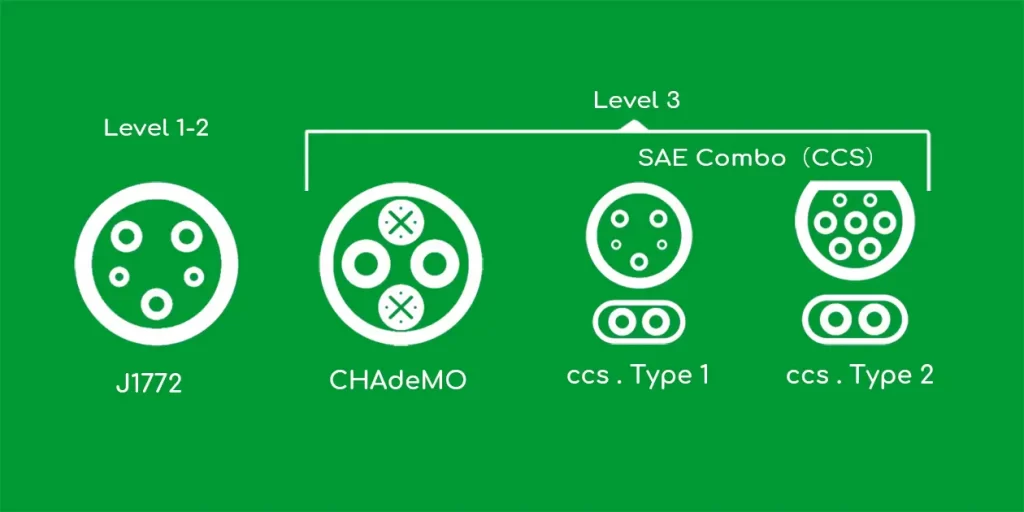
Type 1 EV Charge Plug: Also known as the SAE J1772 plug, this is the most common plug used for Level 1 and Level 2 charging in North America. It features a standard connector that plugs into your car and a handle that allows for easy insertion and removal.
Type 2 EV Charge Plug: The Type 2 plug, also known as the Mennekes plug, is the standard charging plug used in Europe and many other parts of the world. It features a larger connector and is capable of delivering higher power levels than the Type 1 plug.
CCS EV Charge Plug: Combined Charging System (CCS) plugs are used for DC fast charging and are becoming increasingly popular. CCS plugs combine a Type 2 connector for AC charging with two additional DC pins for fast charging. They are compatible with most European and American electric vehicles.
CHAdeMO EV Charge Plug: CHAdeMO plugs are also used for DC fast charging and were initially popular in Japan. While they have lost some market share to CCS plugs, they are still used by some electric vehicle models, particularly those from Japanese manufacturers.
Tesla EV Charge Plug: Tesla vehicles use their own proprietary charging plug, which is compatible with Tesla’s Supercharger network. However, Tesla has recently opened up their charging network to other electric vehicle manufacturers, and a new North American Charging Standard (NACS) plug is being developed for broader compatibility.
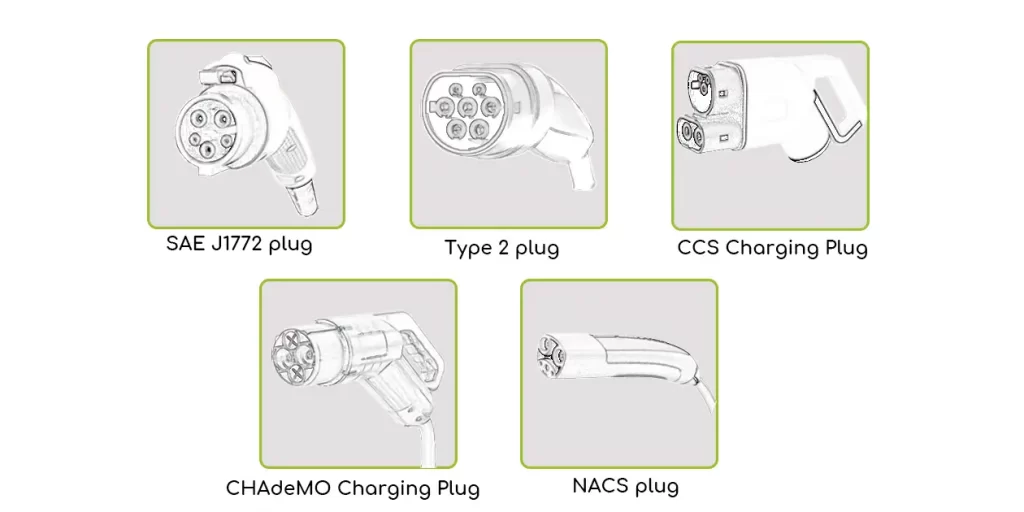
It’s important to note that not all charging stations will have every type of plug available. Before visiting a charging station, it’s a good idea to check the station’s website or use a charging network app to ensure that they have the appropriate plug for your vehicle. Additionally, it’s worth considering investing in an adapter or cable that allows you to connect to different types of plugs, providing you with more flexibility when it comes to charging your EV.
Level 1 Charging Plug
The Level 1 charging plug is an essential component for charging your electric vehicle (EV) at home. This plug is included with most electric cars and is designed to be used with a standard 120-volt household outlet. It provides what is known as a “trickle charge,” which is the slowest type of EV charging but still adds a few miles of range per hour.

While Level 1 charging may be suitable for drivers who primarily travel short distances around town and have access to a regular outlet at night, it may not be ideal for everyone. The low charging rate can be inconvenient for those with longer commutes or who require more frequent charging.
It is important to note that using an extension cord to charge your EV with a Level 1 charge plug is not advisable. Electric car chargers are designed with thicker wires to handle the higher power load required for charging an EV, and using an extension cord can restrict the voltage transfer and create safety hazards such as overheating and electric shock.
For long-term, at-home charging with a Level 1 charge plug, it is recommended to consult a licensed electrician to ensure there is a dedicated circuit to support the power load.
In summary, while Level 1 charging plugs are convenient and inexpensive for short-distance driving, they may not be suitable for all lifestyles. It is important to consider your charging needs and consult an electrician to ensure safe and efficient charging at home.
Level 2 Charging Plug
When it comes to charging your electric vehicle (EV), Level 2 charging is the way to go. This type of charging provides a faster and more efficient charging experience compared to Level 1 charging. With Level 2 charging, you can add about 20 miles of range per hour of charging, making it ideal for overnight charging or longer stops during your day.
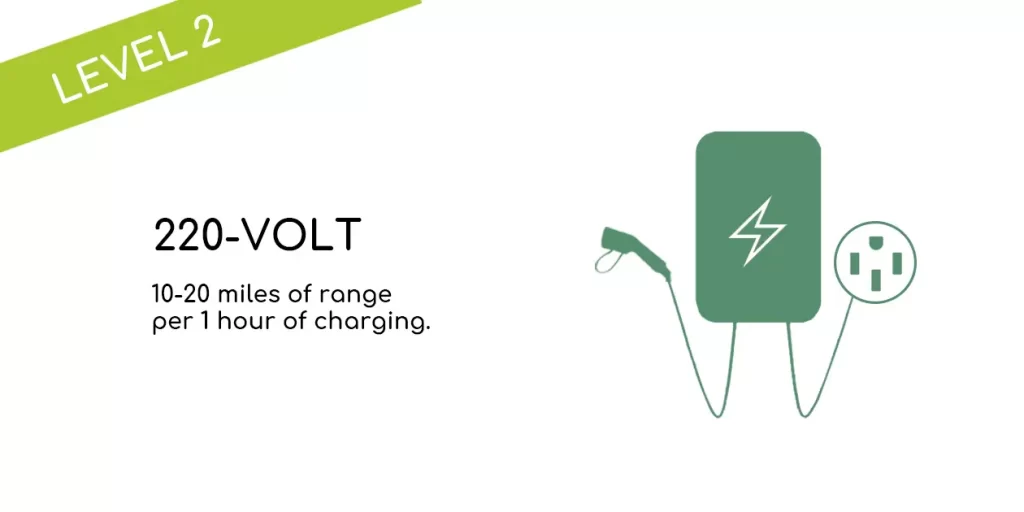
The Level 2 EV charge plug is known as the SAE J1772 connector. This connector is the standard plug used for Level 2 charging in North America. It is compatible with most electric vehicles and can be easily found at public charging stations, workplaces, and even installed in your own home.
To use a Level 2 EV charge plug, you will need a Level 2 charging station or wall-mounted charger. These chargers can be installed by a qualified electrician and are typically connected to a 240-volt outlet, similar to the outlet used for an electric oven or clothes dryer. The Level 2 charger is equipped with the SAE J1772 connector, allowing you to easily plug in your EV and start charging.
One of the advantages of Level 2 charging is the convenience it provides. With faster charging speeds, you can quickly replenish your EV’s battery and get back on the road. This is especially beneficial for those who have longer commutes or need to travel longer distances.
In addition to the convenience, Level 2 charging also offers cost savings. Charging at home with a Level 2 charger is typically more affordable compared to charging at public charging stations. Plus, with the increasing availability of Level 2 charging infrastructure, you can easily find charging stations at shopping centers, parking lots, and other public areas.
Overall, Level 2 charging with the SAE J1772 plug is the preferred method for EV owners who want faster charging speeds and the convenience of charging at home or on the go. With the right charging equipment and access to Level 2 charging stations, you can enjoy a seamless and efficient charging experience for your electric vehicle.
Level 3 Charging Plug
When it comes to charging your electric vehicle (EV) quickly and efficiently, Level 3 charging is the way to go. Also known as DC fast charging, Level 3 charging utilizes high-voltage public stations to provide a rapid charge to your EV.
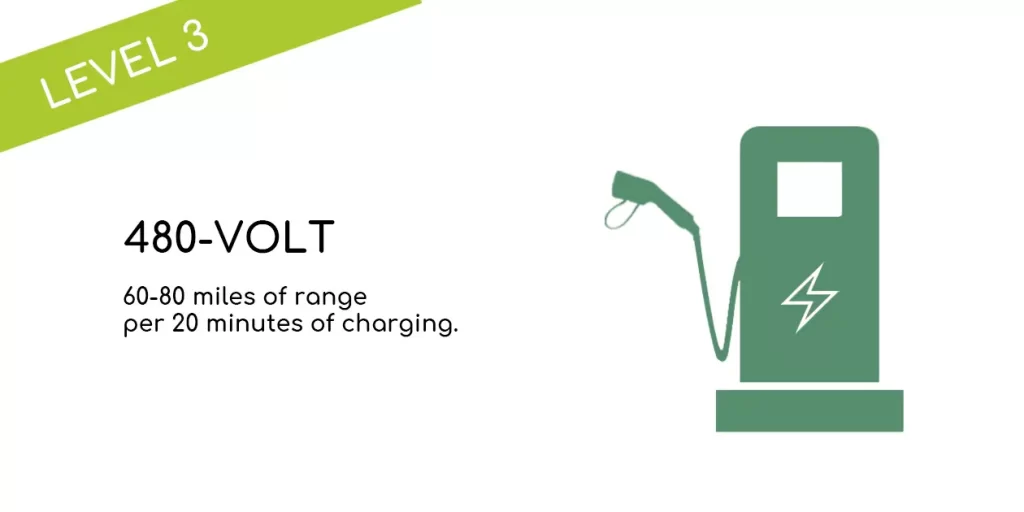
The Level 3 EV charge plug is specifically designed for fast charging and can deliver anywhere from 60 kW up to 360 kW of power, depending on your vehicle’s capabilities. This is the fastest way to charge your EV and can provide a 400- to 600-volt charge directly to the battery. With Level 3 charging, you can go from 0% charge to 80% charge in just 20 to 30 minutes, and a full charge can be achieved in just over an hour.
It’s important to note that not all EVs are capable of accepting Level 3 charging. Some EV batteries are not designed to handle the high wattage of Level 3 charging and may only be compatible with Level 1 and Level 2 charging. Before attempting to use a Level 3 charging station, it’s essential to check your vehicle’s specifications to ensure compatibility.
Level 3 EV charge plugs come in different types, including CHAdeMO, SAE Combo (CCS), and Tesla/NACS. Many DC fast chargers are equipped with both CHAdeMO and CCS plugs, ensuring that most EVs can utilize the charging station. However, it’s always a good idea to check the plug types available at the charging station before arriving.
With Level 3 charging, you can enjoy the convenience of quickly charging your EV while on the go. Whether you’re taking a long-distance trip or need a quick charge to get you to your next destination, Level 3 charging provides the speed and efficiency you need. Just plug in, wait a short time, and you’ll be back on the road with a fully charged battery.
The Future of EV Charging Plugs
As electric vehicles (EVs) continue to gain popularity, the future of EV charging plugs is an exciting and evolving landscape. With advancements in technology and the increasing demand for electric transportation, we can expect to see several developments in the design and functionality of EV charging plugs.
One area of focus is the standardization of EV charge plugs. Currently, there are multiple types of plugs used for EV charging, such as the J1772, CHAdeMO, and SAE Combo (CCS) plugs. This can create confusion and inconvenience for EV owners, especially when traveling long distances. However, efforts are underway to establish a universal charging standard that will allow all EVs to use the same plug, regardless of make or model. This will greatly simplify the charging process and make it more accessible for all EV drivers.
Another aspect of the future of EV charge plugs is the development of wireless charging technology. This innovative solution eliminates the need for physical plugs and cables, allowing EVs to charge simply by being parked over a wireless charging pad. While wireless charging is still in its early stages, it holds great potential for improving the convenience and accessibility of EV charging.
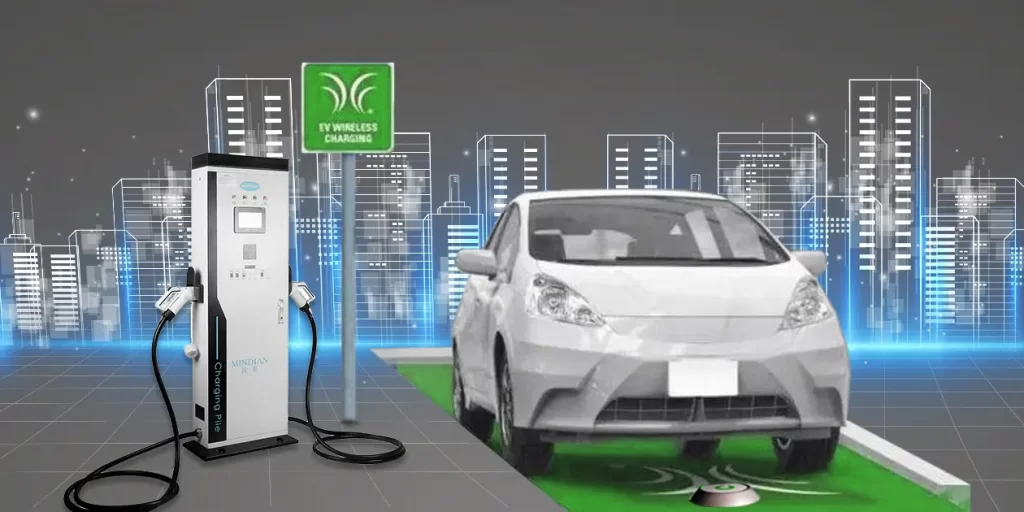
In addition to standardization and wireless charging, the future of EV charge plugs may also include advancements in charging speed and efficiency. As technology improves, we can expect to see faster charging times and more efficient energy transfer, allowing EVs to charge quickly and effectively.
Overall, the future of EV charge plugs is bright and promising. With ongoing advancements in technology and a growing commitment to electric transportation, we can look forward to a more streamlined and convenient charging experience for all EV drivers.
Derek Ke
Hey, I’m Derek Ke, the founder of Moredaydc.com, an expert in solar electrical products and ev charging.
In the past 15 years, we have helped 60 countries and nearly 500 customers (such as farms, residences, industrial and commercial) solve new energy and green power problems. This article aims to share more knowledge about solar electricity and new energy with everyone, so that green electricity can enter every home.
Common Queries
Frequently Asked Questions
please feel free to contact us.
A: EV Charge Plug is an electric vehicle charging solution that utilizes a plug-based system for charging electric vehicles. It involves a physical plug, which is connected to both the electric vehicle and the charging station, allowing for the transfer of electrical power to charge the vehicle’s battery.
A: EV Charge Plug is designed to support various plug types and charging standards, ensuring compatibility with a wide range of electric vehicles. Common plug types include Type 1, Type 2, CCS (Combined Charging System), and CHAdeMO, accommodating different charging needs.
A: EV Charge Plug is versatile and can be used for both home charging setups and public charging stations. It is adaptable to various charging infrastructures, providing electric vehicle owners with flexibility in their charging options.
A: The charging speed with EV Charge Plug depends on several factors, including the electric vehicle’s capability and the charging station’s power output. Generally, EV Charge Plug supports different charging speeds, ranging from standard AC charging to high-speed DC fast charging, catering to various electric vehicle models.
A: Yes, EV Charge Plug often comes equipped with smart features such as mobile app integration, real-time charging status updates, and sometimes even advanced scheduling options. These features enhance user convenience and allow electric vehicle owners to monitor and manage their charging sessions more efficiently.
Make Electricity Available To All People

